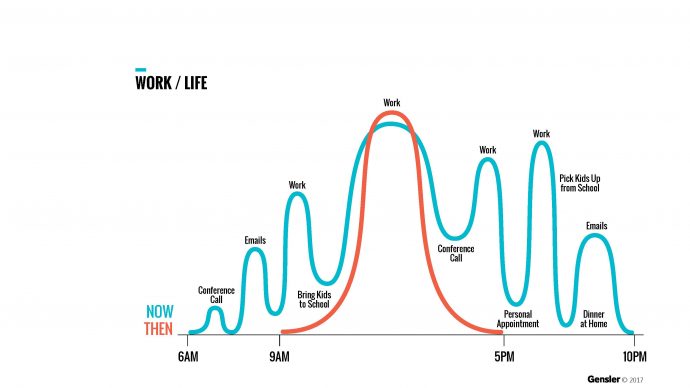Image courtesy of Gensler.
Twenty years ago, when I was looking for a job, I wasn’t concerned about the workplace. I wanted to work in a design firm, if I could, and it didn’t really matter where or with whom, let alone how the space looked or felt.
Today it’s more complicated; I would think more about why I was going to work, where I would be, what I might be doing and with whom I would work and socialize. At least that is what I have come to understand– not from analytics, deep research or articles in the popular press. I have come to this point of view from talking to my kids looking for work and making decisions about the workplace. A younger generation’s perspective can be … insightful … especially when they tell you that you’re stuck in a world that no longer exists. But I’m getting ahead of myself.
Recently I was invited to a meeting to discuss the future of the workplace and what is influencing change. Before we started, one individual on the client side wanted to set the stage. He asked if there were any millennials in the room; yes, we had one on our team. She looked at him and said, “Don’t worry about me; say whatever you want,” waiting for a general remark about entitlement or work ethic. No, this was different. He looked at her and said, “by the time we build and occupy these new buildings, more than likely none of us will still be with the company. We want to understand what we might be missing; that’s what we want to learn.” He continued with a story, anecdotal and simple, that brought the point home: “Back in the day we believed in the 3 R’s – reading, ‘riting, and ‘rithmetic; today we still subscribe to 3 R’s, only they’re different: recruitment, retention, and return.”
From there we discussed what it means to build workplaces in the current and future environments, and how we will know if we get it right. What follows, using the 3 R’s as our guide points, are a few thoughts about where we were, where we think we are going, how we might measure success, and how we can better understand what is driving change today.



